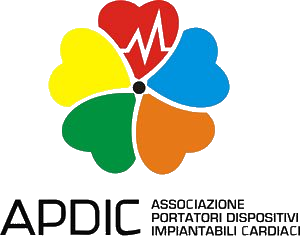CIEDs (pacemaker and ICD) carriers need to undergo both device and clinical follow up.
Clinical Follow up
Clinical Follow up is the most important, as it addresses the underlying heart disease that is under treatment. The goals of the clinical follow up are: to detect overt or subtle changes in the underlying disease and rhythm abnormalities, to adjust the medication prescription, to provide counselling about lifestyle and about normal life events (pregnancy, sport activity, working environment, driving capability) or co-morbidities. Your doctor might want you to take diagnostic testing to assess the extent of heart disease, or to check your functional improvement with appropriate therapy. Subjects with a normal heart or with minimal heart disease require little and less frequent clinical follow up.
Much information is stored into the CIED, respectively about the heart rhythm, the amount of physical activity, the heart failure status, the burden of both supraventricular and ventricular arrhythmias. All this information can be retrieved and delivered to the physicians in order to provide a more comprehensive care.
It is recommended that CIEDs carriers do not rely on device follow up only, as it does not replace a comprehensive medical examination, but undergo periodically a clinical follow up as dictated by the clinical status.
Device follow up
consists of several different steps:
- assessment of the remaining battery capacity, to plan timely device replacement;
- assessment of lead integrity and performance, to ensure that electric therapy (pacing and cardioversion/defibrillation) are effectively delivered;
- minimization of the current drained to stimulate the heart, to increase device longevity and reduce the risks related to replacements;
- monitor the patient rhythm and clinical status, to provide feedbacks that may help to guide clinical decision, particularly about heart failure management and stroke prevention.
Devices were historically followed up more frequently as remaining life service decreased: in the last 12 months before replacement, follow up could occur every 2 months. The discomfort of frequent in-hospital visits for the patients and their families may be well understood. The follow up cost increases with the distance from the CIED follow up centre (transport, parking), and represents also a social cost (loss of working days).
Luckily, we are at a turning point owing to improved device technology and remote monitoring.
Nowadays Pacemaker longevity has greatly improved thanks to the features for automatic verification of capture (generally termed as Autocapture or Autothreshold algorithms) that allow to adjust automatically the pacing output to the smallest possible current needed to effectively stimulate the heart. Greater safety compared to the past is ensured by a close automatic monitoring of cardiac stimulation threshold. The benefit is such that a 10 to 15 years battery longevity can be expected. Other automatic algorithms that check the device performance daily have recently reported to be so reliable that “technical” device follow-up to assess its functioning is not needed any longer but for the battery check. This very simple check might be undertaken every 12 months until the elective replacement indication (ERI) is reached.
The role of the physician remains indeed pivotal, that is to set a device programming tailored to each patient’s clinical status: once this is done the device will operate this programming until a change based on medical decision is undertaken.
Beyond full device automaticity, remote management of the implanted device is changing the practice of follow up. Indeed, this may not only obviate the need for in-hospital follow up while providing as frequent follow up as clinically indicated (for instance, approaching the time of device replacement, or for arrhythmia/heart failure monitoring purpose), but may also provide automatic notification of relevant technical/clinical information to the follow up centre and to the referring physician. For instance, when pacing threshold increase or loss of lead function or AF onset are automatically notified, reaction may occur respectively with device programming and lead issues management, or with stroke prevention strategies.
This evolution of the device follow up practice needs a global change both in the psychological attitude of the subjects treated with a CIED, and in the medical system organization.
CIEDs carriers may feel the loss of the “personal experience” in a remote monitoring setting, especially the elderly. This might be at least partly mitigated by having a verbal contact (probably better an audio/video contact) via the Internet with the dedicated nurse/technician/physiologist either reassuring that everything’s OK, or inviting them to an in-hospital or clinical follow up to manage some changing situation.
The health system need to react by shifting resources from in-hospital visits to remote device monitoring. This implies a huge education effort to train physicians, nurses, technicians, physiologists in device follow up (such a program is not provided by any Institution) and a different organization to react at alerts about device/leads underperformance or loss of function, and at a changing clinical status. These occurrences are now managed on an urgency/emergency basis, due to late recognition and diagnosis. Indeed, data stored into the device may suggest patterns of changing medical conditions that need to be recognized, investigated for a definite diagnosis, and properly treated. Such a timely management could save lives, improve patients’ care, and decrease healthcare (social) costs.
Eventually, the perception of internet-based medical care (telemedicine) is yet confused among healthcare providers (from overstatement to total refusal) in many countries because of lack of a nationwide systematic approach to its organization. A clear definition of its objectives, of human and technical resources allocation, and linking to the hospital and ambulatory (cardiology & general medicine) practice would greatly help to understand the value of remote CIEDs follow up.
